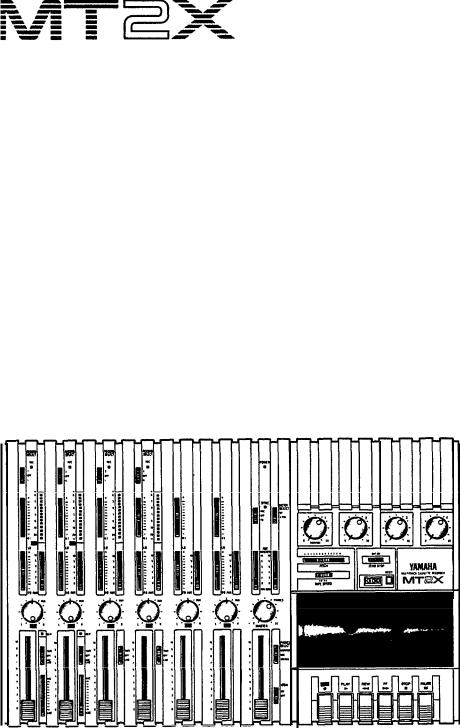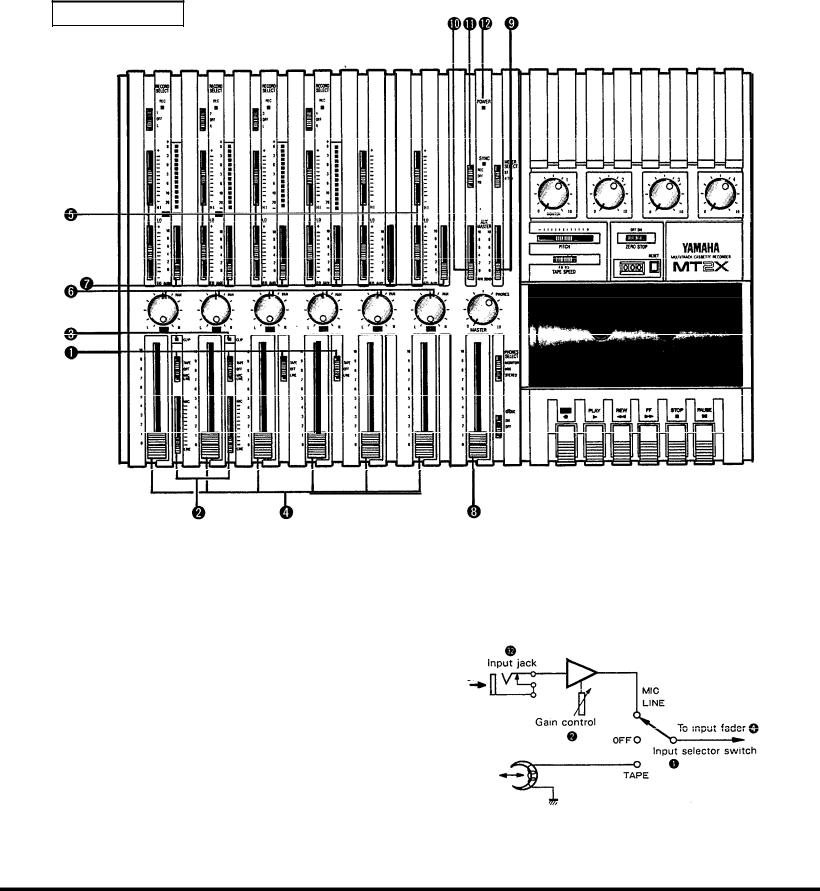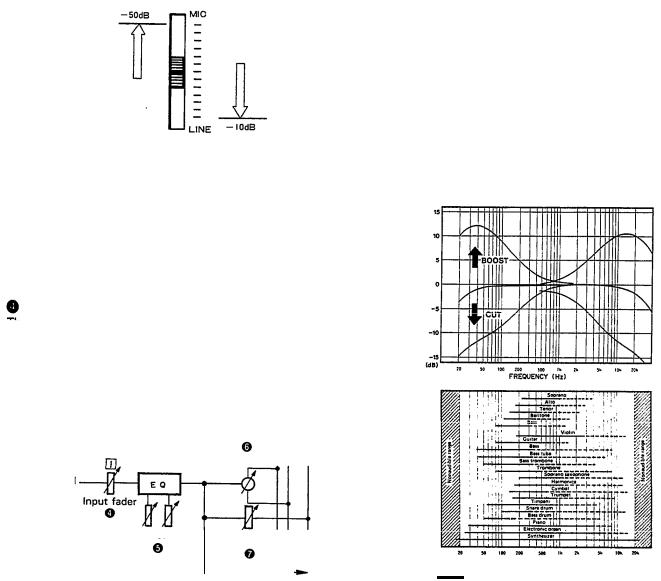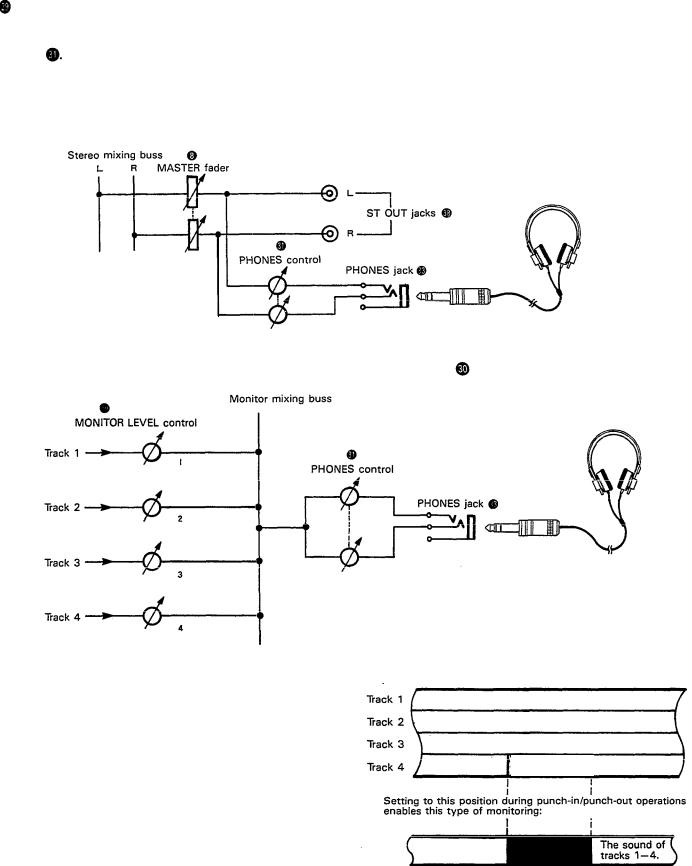Yamaha MT-2X User Manual

YAMAHA®
AUTHORIZED PRODUCT MANUAL
Multitrack Cassette Recorder

YAMAHA
Multitrack Cassette Recorder
Operating Manual
Congratulations on your choice of the Yamaha MT2X Multitrack Cassette Recorder. The Yamaha MT2X Multitrack Cassette Recorder is a complete multitrack recording package which elegantly integrates a high-performance six-channel mixer and dual-speed 4-track cassette recorder. It is fully compatible with advanced MIDI tape synchronization applications, and accepts an optional plug-in YMC2 MIDI Converter that makes MIDI timing signals from any appropriate MIDI device usable for synchronization With a full complement of carefully planned features and functions, the MT2X is a musical instrument in its own right. It can vastly expand your creative s c o p e .
To take full advantage of the outstanding features and performance capabilities of the MT2X, we urge to read this owner’s manual thoroughly.
CONTENTS |
|
BEFORE OPERATION ................................................................. |
2 |
PLEASE NOTE THE FOLLOWING PRECAUTIONS ...................... |
2 |
THE DIFFERENCE BETWEEN TRACKS AND CHANNELS ............ |
3 |
WHAT IS A MULTITRACK CASSETTE RECORDER? .................. |
3 |
THE CONTROLS AND THEIR FUNCTIONS .................................... |
4 |
MIXER SECTION ................................................................... |
4 |
RECORDER SECTION ............................................................ |
8 |
METER AND MONITOR SECTION ........................................... |
10 |
CONNECTOR SECTION .......................................................... |
12 |
CONNECTION EXAMPLE ............................................................ |
14 |
ABOUT CASSETTE TAPES ......................................................... |
15 |
MULTITRACK RECORDING TECHNIQUES .................................... |
16 |
ONE EXAMPLE OF A MULTITRACK RECORDING PROCESS ....... |
16 |
BEFORE RECORDING ............................................................. |
16 |
MULTITRACK RECORDING .................................................... |
17 |
USING CHANNELS 5 AND 6 .................................................. |
33 |
SYNC-RECORDING .................................................................... |
3 4 |
FOR MAXIMUM PERFORMANCE OF YOUR MT2X ........................ |
35 |
BLOCK DIAGRAM ..................................................................... |
36 |
GENERAL SPECIFICATIONS ....................................................... |
37 |
INTRODUCTION TO THE ACCESSORIES ...................................... |
38 |
SERVICE .................................................................................. |
39 |
1

BEFORE OPERATION
n PLEASE NOTE THE FOLLOWING PRECAUTIONS:
ABOUT CASSETTE TAPE
This unit is designed to be used only with Chromeposition tape, and will not work properly with Ferrichrome tape formulations. CrO2 tape (Bias: HIGH; EQ: 70µs) should be used. Also, the use of C-120 tapes is not recommended because they exhibit poorer performance, and can be the cause of equipment failure.
ABOUT dbx
In order to get proper sound reproduction, set the dbx switch ON when playing back tapes recorded with dbx on, and keep it OFF when playing back tapes recorded without dbx.
*dbx and the dbx mark are trademarks of dbx incorporated.
*The dbx system has been manufactured under license of dbx Incorporated.
 CHECK YOUR AC POWER SUPPLY
CHECK YOUR AC POWER SUPPLY
Make sure that your local AC mains voltage matches the voltage specified on the bottom panel of the MT2X — check this BEFORE plugging in and turning on your MT2X! For General models equipped with a voltage selector, make sure the voltage selector is set to match your local line voltage.
The rated supply voltage for U.S. and Canadian models is 120 VAC. The General model is rated for use with 110/120/220/240 VAC supplies (the bottompanel voltage selector is factory preset to 220 volts).
 PRECAUTION AGAINST LIGHTNING
PRECAUTION AGAINST LIGHTNING
In the event of lightning or electrical storms, unplug the AC power cord as soon as possible to avoid potential damage.
DO NOT OPEN THE CABINET
To avoid electrical shock or damage to the unit, do not open the cabinet and tamper with the parts or circuits inside.
CONNECTING OTHER EQUIPMENT
Make sure the power switch is OFF and the input fader is all the way down when connecting other
equipment.
MOVING THE UNIT
To prevent shorts or breakage, make sure all connection cords have been removed from the unit before moving it.
 CLEANING THE CABINET
CLEANING THE CABINET
Do not clean the unit with benzene or other powerful solvents, and avoid the use of aerosol insecticides near the unit. Clean the unit only with a soft, dry cloth.
FCC CERTIFICATION (USA)
This equipment generates and uses radio frequency energy and if not installed and used properly, that is, in strict accordance with the manufacturer’s instructions, may cause interference to radio and television reception. It has been type tested and found to comply with the limits for a Class B computing device in accordance with the specifications in Subpart J of Part 15 of FCC Rules, which are designed to provide reasonable protection against such interference in a residential installation. However, there is no guarantee that interference will not occur in a particular installation. If this equipment does cause interference to radio or television reception, which can be determined by turning the equipment off and on, the user is encouraged to try to correct the interference by one or more of the following measures:
Reorient the receiving antenna.
Relocate the computer with respect to the receiver. Move the computer away from the receiver. Plug the computer into a different outlet so that
computer and receiver are on different branch circuits.
If necessary, the user should consult the dealer or an experienced radio/television technician for additional suggestions. The user may find the following booklet prepared by the Federal Communications Commission helpful:
“How to identify and Resolve Radio-TV interference problems”.
This booklet is available from the U.S. Government Printing Office, Washington, DC 20402, Stock No. 004-000-00345-4.
2

n THE DIFFERENCE BETWEEN TRACKS AND CHANNELS
The words “track” and “channel” are often confused. In order to properly operate this unit, it is necessary to understand the meanings of these terms.
TRACK:
The “band” on the tape itself where a certain signal is recorded. The tape inside a cassette has four different tracks, enabling the recording of four distinct signals. For conventional recordings, there are two tracks (stereo left and right) on each side of the tape.
n WHAT IS A MULTITRACK CASSETTE RECORDER?
CHANNEL:
The route of a signal input or output. In the input side, this unit has six INPUT channels and two AUX channels. The output side consists of one stereo channel (made up of two mono channels) and an AUX channel.
The difference between the MT2X multitrack cassette recorder and a conventional stereo cassette deck is shown below.
CONVENTIONAL STEREO CASSETTE DECK
For right channel track
For left channel track
For left channel track on the B side
For right channel track on the B side
For right channel track on the A side
For left channel track on the A side
MT2X MULTITRACK |
CASSETTE RECORDER |
For channel 3 |
For channel 4 |
Track for channel 4 (track 4)
Track for channel 3 (track 3)
Track for channel 2 (track 2)
Track for channel 1 (track 1)
The diagram shows how a conventional stereo cassette deck records and plays back music. The four tracks on a cassette tape represent the left and right (for stereo) sound for each side of the tape. The MT2X uses these four tracks for single-direction recording and playback on only one side of a cassette tape.
Conventional stereo cassette recorders always record and play back in the same mode, with the tape side (direction) determining which two tracks will be used. These recorders do not allow separate selection of tracks for recording and playback.
Multitrack recorders, however, allow you to record or playback tracks separately as you choose. This enables a degree of recording and playback freedom not possible with conventional cassette recorders.
3

THE CONTROLS AND THEIR FUNCTIONS
This section explains the names and functions of all the knobs, sliders, and switches for the mixer, recorder, meter/ monitor, and connector sections. Familiarize yourself with them in order to take full advantage of the MT2X’s versatile functions.
MIXER SECTION
 INPUT SELECTOR SWITCHES
INPUT SELECTOR SWITCHES
These three-position switches are provided on input channels 1 through 4. Position them according to the operation to be performed. Note that input channels 5 and 6 only accept line input.
MIC/LINE: Only input channels 1 and 2 accept microphone input. This position on the channel 3 and 4 inputs is simply marked “LINE”. Set this switch to the proper position when the output of a microphone, keyboard instrument, or electric guitar is connected to the corresponding input jack on the front panel.
OFF: Be sure to set the switch to this position when the channel is not being used, or when you don’t want to playback material already recorded on the track. Although sliding the input fader to the “O” position will stop the signal, it’s a good idea to also set the switch to OFF.
to the “O” position will stop the signal, it’s a good idea to also set the switch to OFF.
TAPE: Set the switch to this position to playback material which has already been recorded on this channel. Channels 1–4 correspond to tracks 1–4 on the tape.
Microphone or
i n s t r u m e n t to channel
1 or 2
Sounds already recorded
4

 GAIN CONTROLS
GAIN CONTROLS
These controls adjust the input level of the channel to match the output level of a microphone or instrument connected to input jack of channel 1 or 2.
Control from -10dB to -50dB is possible. Adjust the output level of the microphone or instrument as outlined in its instruction booklet.
Low output source, such as a microphone
High output source, such as an electronic keyboard
 CLIP INDICATOR
CLIP INDICATOR
These LED indicators are provided on channels 1 and 2. If a CLIP LED lights, the input level to that channel is too high and is causing clipping distortion. The situation must be remedied by reducing the setting of the corresponding GAIN control, or by reducing the output level of the source.
INPUT FADERS
These controls adjust the volume of the signal input, and send it to the  equalizer. Each control is used for setting the sound level of its channel when mixing it with the signals of other channels. Position “7” on the scale is considered ideal for the lowest noise and distortion characteristics.
equalizer. Each control is used for setting the sound level of its channel when mixing it with the signals of other channels. Position “7” on the scale is considered ideal for the lowest noise and distortion characteristics.
|
|
L R AUX |
||||
|
|
Pan pot |
|
|
|
|
Input signal |
|
|
|
|
|
|
|
|
|
|
|
|
|
Equalizer controls |
AUX control |
|||||
|
|
|
|
|
|
|
Be sure to set the control to “0” for channels not being used.
 EQUALIZER CONTROLS
EQUALIZER CONTROLS
These controls are used to adjust the tonal characteristics of the input signal, or the channel output during playback of previously recorded material. The LO (low) controls adjust the frequencies centering around 100Hz, while the HI (high) controls adjust the frequencies centering around 10KHz, with a 10dB boost or cut range for both controls. Use of these equalizer controls will help
you to get the type of sound you desire, and allow you to bring the sound “forward”, “clean up” unclear sounds, and “push down” sounds at annoying frequencies.
In order to properly use these equalizers, it’s important to understand the frequency response characteristics of various musical instruments. This is particularly true when trying to “change” the sound of a certain instrument, because you should know that instrument’s harmonic sound components as well. For example, the normal frequency range of a bass drum is between 50Hz and 150Hz. To bring out this sound so you can feel it better, the LO (low) control (which centers on the 100Hz frequency band) can be moved up a little. But the harmonic sound components are around I0KHz, so the HI (high) control should also be moved up a little to achieve the proper sound profile of the bass drum.
SOUND CHARACTERISTICS OF THE EQUALIZER AND VARIOUS MUSICAL INSTRUMENTS
FREQUENCY (Hz)
Normal frequency ----- Harmonic sound components
If accurate and comprehensive sound equalization is required, connect a graphic equalizer or a parameteric equalizer between the sound source and the input jack.
When recording material that you intend to “ping-pong” (see “Ping-ponging” on page 25) later, give the input somewhat of a high boost with the Hi control to help preserve the high frequency response when the track is re-recorded. This technique is known as “pre-emphasis,” and is commonly used in professional recording.
5

 PAN (PAN POT) CONTROLS
PAN (PAN POT) CONTROLS
After volume level and equalizing, the input signal is sent to these controls. During mixdown (see “Mixdown” on page 31, each control helps determine the acoustic “position” of the signal in regards to the stereo field. Turning the control all the way to the left puts the signal all the way over to the left side of the stereo sound field; turning the control to the right sends the signal towards the right. At dead center, the signal comes out equally from the left and right channels.
L |
|
Center |
R |
|||
I |
|
|
|
|
|
I |
|
|
|
PAN |
|
||
|
|
|
|
|
|
|
All the way to the left, |
|
|
|
|
||
the signal |
comes out |
|
|
|
|
|
from the |
left channel. L |
|
R |
|
|
|
|
|
|
|
PAN |
|
|
|
|
|
|
All the way to the |
||
|
|
|
|
right, the |
signal comes |
|
|
|
|
|
out from |
the right |
|
|
|
|
|
channel. |
|
|
These controls are also useful in ping-ponging (see “Pingponging” on page 25).
 AUX CONTROLS
AUX CONTROLS
The MT2X is equipped with an AUX SEND jack and two (left and right) AUX RETURN jacks When special
effects are desired on a certain channel, reverb or delay effects can be connected between these jacks to provide
only the desired effect to the desired channel. Amplified monitor speakers can also be connected to the AUX SEND jack. Each AUX control adjusts the sources connected to the AUX SEND jack in the following manner.
CONNECTING AN EFFECTOR |
|
|
|||
|
|
|
AUX controls |
|
|
Channel |
1 |
signal |
AUX MASTER |
|
|
|
|
|
|
||
Channel |
2 |
signal |
SEND |
control |
|
|
|
|
|||
Channel |
3 |
signal |
|
|
|
Channel |
4 |
signal |
|
Effects |
device |
|
(digital |
reverb, digital delay, etc.) |
|||
AUX RTN control
To the left & right stereo mix busses
Channel 5 signal
Channel 6 signal
Raise the AUX control |
of the channel which requires effects. At the same time, make sure that the AUX controls for the other channels |
are adjusted for proper balance. The effected signal, with all the channel signals mixed in, flows in the following manner: AUX MASTER |
|
SEND control |
effects device |
AUX RTN . |
At the end, the sounds are mixed by the stereo mix buss. |
|||
CONNECTING MONITOR SPEAKERS |
|
|
||||
|
|
|
AUX control |
|
|
|
Channel |
1 |
signal |
AUX MASTER |
|
|
|
|
|
|
|
|
||
Channel |
2 |
signal |
SEND |
control |
|
|
|
|
|
|
|||
Channel |
3 |
signal |
|
|
|
|
Channel |
4 |
signal |
|
|
Amplified monitor |
|
|
|
|
|
|
speakers |
|
Channel |
5 |
signal |
|
|
|
|
Channel |
6 |
signal |
|
|
|
|
Performers or sound mixers can control |
the level balance |
of the four channels (instruments) with the AUX controls |
, with the total output |
|||
level adjusted by the AUX MASTER SEND control |
|
|
||||
6

MASTER FADER
This controls the level of all the input faders, as well as the final level of the effected signal of the AUX RTN control  and the sound mixed through the stereo mix buss. The output level of the ST OUT jack
and the sound mixed through the stereo mix buss. The output level of the ST OUT jack  (the recording level
(the recording level
at mixdown) and the recording level during ping-ponging are also adjusted with this control.
Set the control input faders at “7” for best results.
AUX MASTER SEND CONTROL
This control adjusts the level of the effect-mixed signals from each channel (adjusted by each AUX control  ) as well as the AUX signal for monitoring use. The final output is through the AUX SEND jack
) as well as the AUX signal for monitoring use. The final output is through the AUX SEND jack 
 AUX RETURN CONTROL
AUX RETURN CONTROL
This control adjusts the input level of effects or submixers connected to the AUX RTN jack  . The level of the effect in relation to the “dry” sound can be set with this control.
. The level of the effect in relation to the “dry” sound can be set with this control.
 SYNC SWITCH
SYNC SWITCH
Normally left in the “OFF” position, this switch should be set to REC or PB if this unit is to be used for synchronized operation with MIDI products like synthesizers and rhythm machines. Synchro operation is explained in the section on Sync-Recording on page 34.
 POWER INDICATOR
POWER INDICATOR
This indicator lights when the power switch on the rear panel is turned on.
on the rear panel is turned on.
7

RECORDER SECTION
 RECORD SELECT SWITCHES
RECORD SELECT SWITCHES
These switches are used to choose the signal to be recorded. When the track is not to be recording, set the corresponding switch to the OFF position. Switch ON only those switches corresponding to the tracks which are to record. The panel indications for “L" and “R” correspond to the stereo left and right signals, whereas “1”, “2”, “3”, and “4” correspond to the signal from the 1, 2, 3, and 4 input channels. Those signals are recorded
on their respective track when the switches are in position.
NOTE: Tracks 1 and 3 cannot be recorded from the right stereo signal, and tracks 2 and 4 cannot be recorded from the left stereo signal.
REC INDICATORS
Each track on the MT2X has its own REC indicator LED. When the RECORD SELECT switches are used to set one or more of the tracks to the REC standby mode (that is, the selected tracks are ready to record but the cassette transport is not yet running in the REC mode), the corresponding REC INDICATOR(s) will flash. When recording is actually begun, the REC INDICATORS for the selected tracks will light continuously.
8

REC SWITCH
When this switch is pressed, the PLAY switch  also moves, and the unit goes into the recording mode. However, if the RECORD SELECT switches for all tracks 1-4 are switched OFF, nothing will be recorded.
also moves, and the unit goes into the recording mode. However, if the RECORD SELECT switches for all tracks 1-4 are switched OFF, nothing will be recorded.
NOTE: When the REC switch is pressed down, noise occurs which is recorded on the tape. In order to prevent this, we recommended the use of the PAUSE switch . Press the PAUSE switch first, then press the REC switch. To start recording, press the PAUSE switch again to shift out of the REC pause mode and into the recording mode.
 PLAY SWITCH
PLAY SWITCH
Press this switch for playback. However, if the input selector switch of a track is not in the TAPE position, the sound will not be heard on the stereo buss.
 REW SWITCH (REWIND)
REW SWITCH (REWIND)
Use this switch to rewind the tape. Pressing it when the MT2X is in the PLAY mode enables you to hear the sound of the tape while it rewinds. This feature is useful for finding the beginning of a song or other recorded material.
 FF SWITCH (FAST FORWARD)
FF SWITCH (FAST FORWARD)
Use this switch to quickly advance the tape forward. Pressing it when the MT2X is in the PLAY mode enables you to hear the sound of the tape while it is moved forward. This feature is useful for cueing up the start of a subsequent song or other recorded material on the tape.
 STOP SWITCH
STOP SWITCH
Press this to stop tape.
 PAUSE SWITCH
PAUSE SWITCH
Press this switch to momentarily stop playback or recording in progress. Press it again to restart.
 dbx SWITCH
dbx SWITCH
Ordinary cassette tapes don’t have sufficient dynamic range (the level difference between the softest sounds and the loudest peaks) to adequately record highly dynamic music. If the dbx switch is put “ON” during recording, highly dynamic music signals can be adequately handled, while the hiss noise inherent to cassette tapes is kept down below the range of human hearing. If the dbx switch is kept “ON” during recording, it must also be kept “ON” during playback.
 PITCH CONTROL
PITCH CONTROL
During recording or playback, this control can be used to vary the tape running speed from +10% to -10%. The pitch of voices or musical instruments also varies in proportion to tape speed.
Under normal conditions, the control should be in the center position. When overdubbing (playing back a recorded passage while recording new material on a different track) the pitch of the previously recorded material can be altered to match the new material if necessary. This feature can also be used to obtain certain special effects during recording.
 TAPE SPEED SWITCH
TAPE SPEED SWITCH
This switch selects either LO (4.8 cm/s) or HI (9.5 cm/sec) cassette tape speed. The low-speed setting corresponds to standard cassette tape speed, offering maximum recording time. The HI setting causes the tape to run at twice the standard tape speed, reducing available recording time but significantly improving sound quality.
TAPE COUNTER
This displays the amount of tape run.
 RESET SWITCH
RESET SWITCH
Press this switch to reset the tape counter to “000”. Pressing this switch at the start of recording, or at the beginning of a song, makes it easy to cue up the selection from the start.
 ZERO STOP SWITCH
ZERO STOP SWITCH
If this switch is set “ON” during rewinding, the tape will stop when the tape counter reaches “999”. During multitrack recording, this feature is convenient for repeated playback or recording operations after rewind.
9

METER AND MONITOR SECTION
 METER SELECT SWITCH
METER SELECT SWITCH
This switch is used to select the signal to be monitored by the Peak Level Meters 
Stereo Position:
The level of the signal output through the ST OUT jacks  is indicated. The meter on the far left shows the level of the Left channel of the stereo signal, while the second meter from the left shows the level of the Right channel. Setting to this position during pingponging or mixdown operations enables easy reading of the recording level.
is indicated. The meter on the far left shows the level of the Left channel of the stereo signal, while the second meter from the left shows the level of the Right channel. Setting to this position during pingponging or mixdown operations enables easy reading of the recording level.
4 TRK Position:
Set the switch in this position to display the level of each track. Starting from the far left, each meter corresponds to tracks 1–-4. During playback, the playback level is displayed; during recording, the recording level is displayed. Setting the switch to this position during overdubbing enables easy reading of the recording level.
 PEAK LEVEL METERS
PEAK LEVEL METERS
There are 14 LED indicators in each meter which show a range from - 20dB to +6dB. During recording, setting levels high (but below the point where the recording becomes distorted) will ensure the greatest dynamic range with the lowest possible noise. An ideal point is when the LED indicators for 0dB and above flash occasionally.
During stereo signal level indication, the actual specified output from the ST OUT jacks  is - 10dB (into a 50K ohm load) when the LED indicators start to flash at 0dB.
is - 10dB (into a 50K ohm load) when the LED indicators start to flash at 0dB.
10

PHONES SELECT SWITCH
You can plug a set of headphones into the PHONES jack on the front panel to monitor the sound. The PHONES SELECT Switch is used to select the signal to be monitored. Control the volume level with the PHONES volume control .
on the front panel to monitor the sound. The PHONES SELECT Switch is used to select the signal to be monitored. Control the volume level with the PHONES volume control .
STEREO Position:
Put the switch in this position to monitor the signal output through the ST OUT jacks . The Left and Right channels of the stereo signal will be heard through the headphones.
. The Left and Right channels of the stereo signal will be heard through the headphones.
When set to this position during ping-ponging or mixdown operations, the mixed signal of all the instruments can be monitored.
MONITOR Position:
This position is for monitoring the signal of each track. You can freely monitor while mixing the sound of each track during recording or playback. Using the MONITOR LEVEL Controls set the desired level for each track.
MIX Position:
This position allows you to simultaneously monitor both the sound heard in the STEREO position and the sound heard in the MONITOR position. Setting to this position during punch-in/punch-out operations will enable the type of monitoring shown below. (Refer to “Punch-in/Punch-out” on page 27).
For example, when adding in instruments or vocals in the following way:
For retake
|
The sound of |
Tracks |
1-3 |
|
|
tracks 1-4 |
plus the |
||
|
plus the sound |
sound |
of the |
|
11 |
of |
the material |
material |
|
to |
be added. |
added. |
|
|
